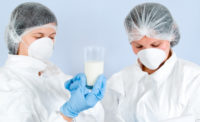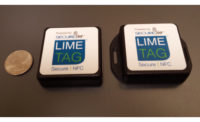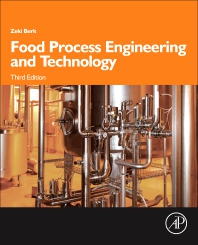How Internet of Things improves food safety
The IoT has the potential to disrupt food storage conventions.

The Centers for Disease Control and Prevention (CDC), Washington, D.C., estimates that 48 million Americans get sick from foodborne illnesses every year.
Combine that with news stories like E. Coli disasters, and it’s no wonder that increased consumer awareness coupled with legislation like the Food Safety Modernization Act (FSMA) is shining more of a spotlight on food safety than ever before. This means there’s greater attention on every link in the cold chain, from production to storage, and transportation to distribution. It seems like the Internet of Things (IoT) may have arrived just in time to improve food safety.
Indeed, the IoT has the potential to disrupt food storage conventions in the same way that it has reinvented manufacturing, building management, retail and other major industries. The IoT brings a slew of advantages to the food industry such as improved energy efficiency, workflow improvement and reliability, to name a few. But, through a combination of instrumentation, sensors, automation and data analysis, the IoT is poised to significantly increase confidence in food safety throughout the supply chain.
After all, it’s trivial in 2019 to equip refrigeration units with off-the-shelf smart and connected technologies that can continuously report their status to the network, where they can be monitored autonomously for malfunctions. For example, if a freezer breaks down, the IoT controls notifies support teams immediately, without any human intervention.
What’s more is, these same systems can monitor the health of storage units over time and predict when maintenance is required, thus completely preventing unplanned failures and food spoilages. And, predictive maintenance isn’t just good for the bottom line – reliable storage is safe and dependable storage for perishable foodstuffs.
The IoT interfaces with mobile devices too, so management and safety personnel can access the same kind of status information on their smartphones – anywhere, any time.
But, perhaps the single most important advantage that the IoT delivers is the promise of enhanced traceability. Thanks to temperature sensors and tracking technology like RFID tags, it’s possible to monitor food products continuously, at every point in the cold chain.
This means that not only is it possible to know exactly where your inventory is at all times, but also what temperature it is—as well as its complete temperature history. The IoT network can monitor temperature fluctuations, so you can easily assess the exact moment when temperatures unexpectedly spiked, for how long and specifically which lots were affected.
This lets you monitor how well goods are being handled, if your own processes are being followed and ensure that you stay in compliance with state and federal food safety regulations.
And, that’s not all. You can do all that without sending employees around the floor manually taking samples or measurements. It all happens automatically, continuously and in real time. Because the inventory, refrigeration, storage and transportation systems can be fully instrumented, you can monitor and manage inventory remotely, for virtually instant access.
This offers unprecedented levels of control. If a contaminated lot is discovered, for example, those products can be isolated quickly, ensuring that no unsafe food is sold, allowed to cause cross contamination. In turn, this means regulatory compliance and reporting can become far simpler. If you’re still using manual Hazard Analysis and Critical Control Points (HACCP) logbooks, you can abandon them in favor of digital systems backed by real-time data gathering and analysis.
All of this is just the beginning. Once you start monitoring foodstuffs for temperature and location, for example, it’s easy to add sensors to measure other environmental factors deemed a health concern. The big data being amassed by an IoT system can be leveraged to help track harmful bacteria back to its source. And, instrumenting refrigeration equipment will lead to significant cost savings and efficiency improvements over time, leading to better outcomes for the industry and the public.
Looking for a reprint of this article?
From high-res PDFs to custom plaques, order your copy today!








